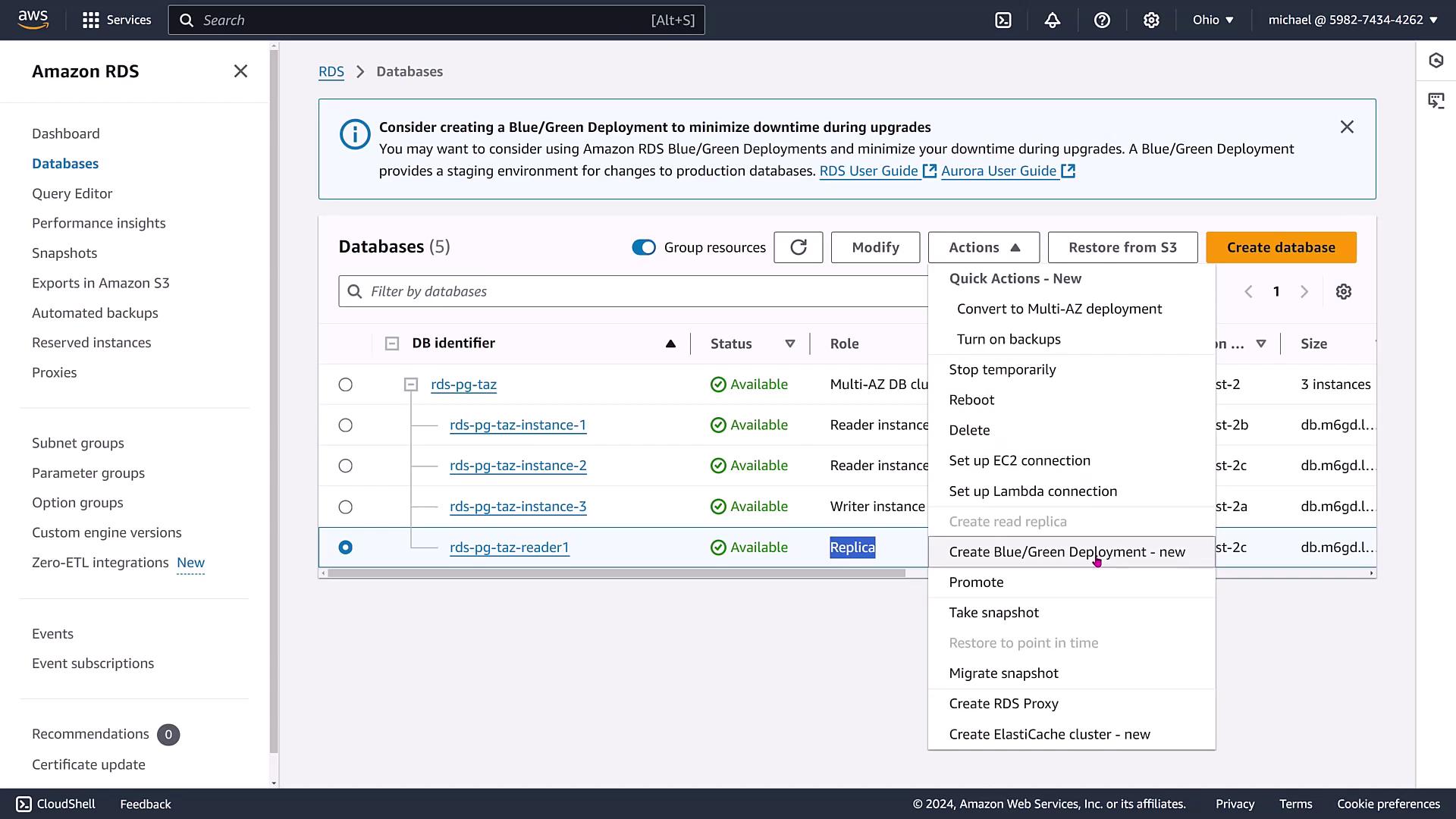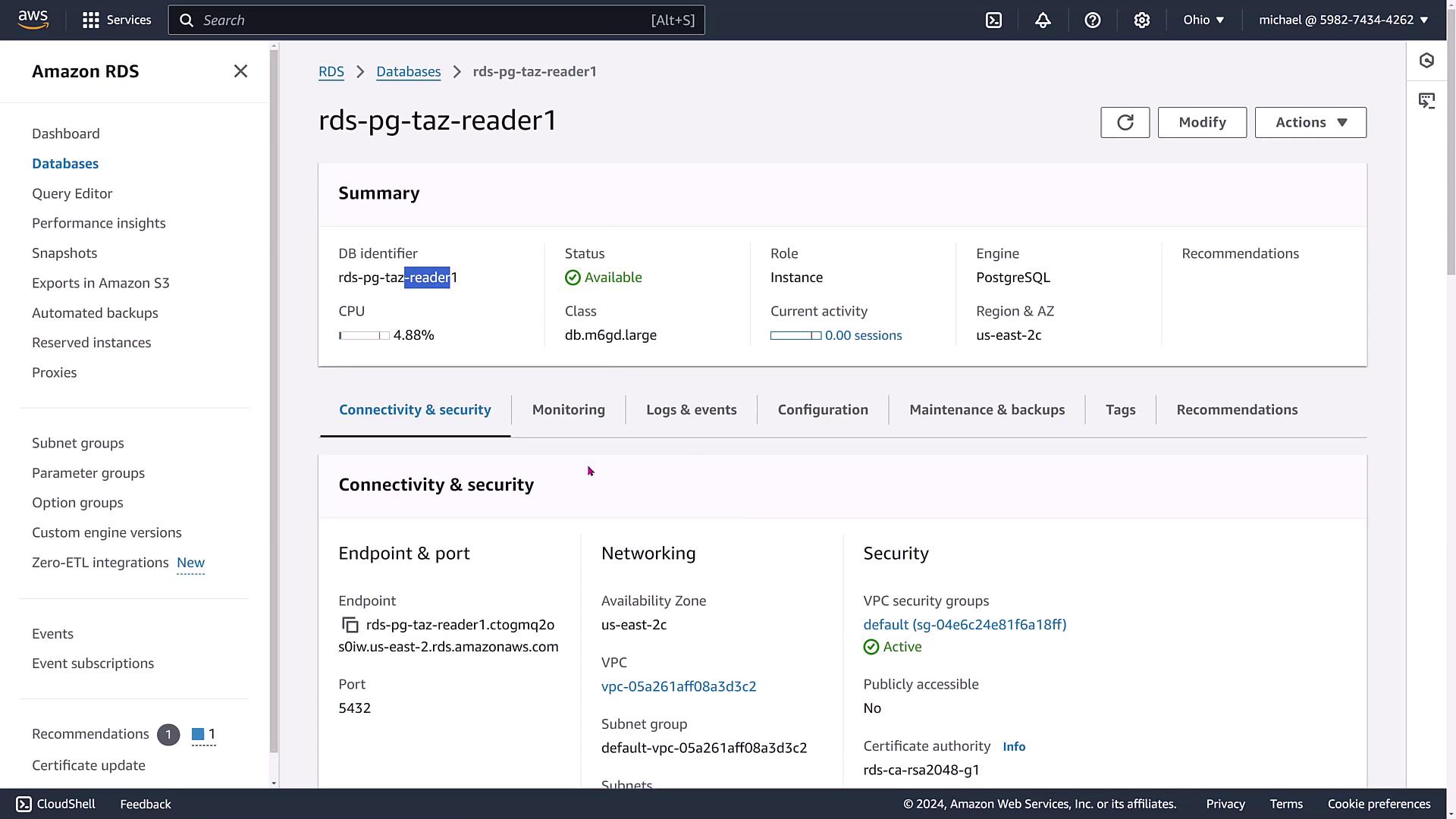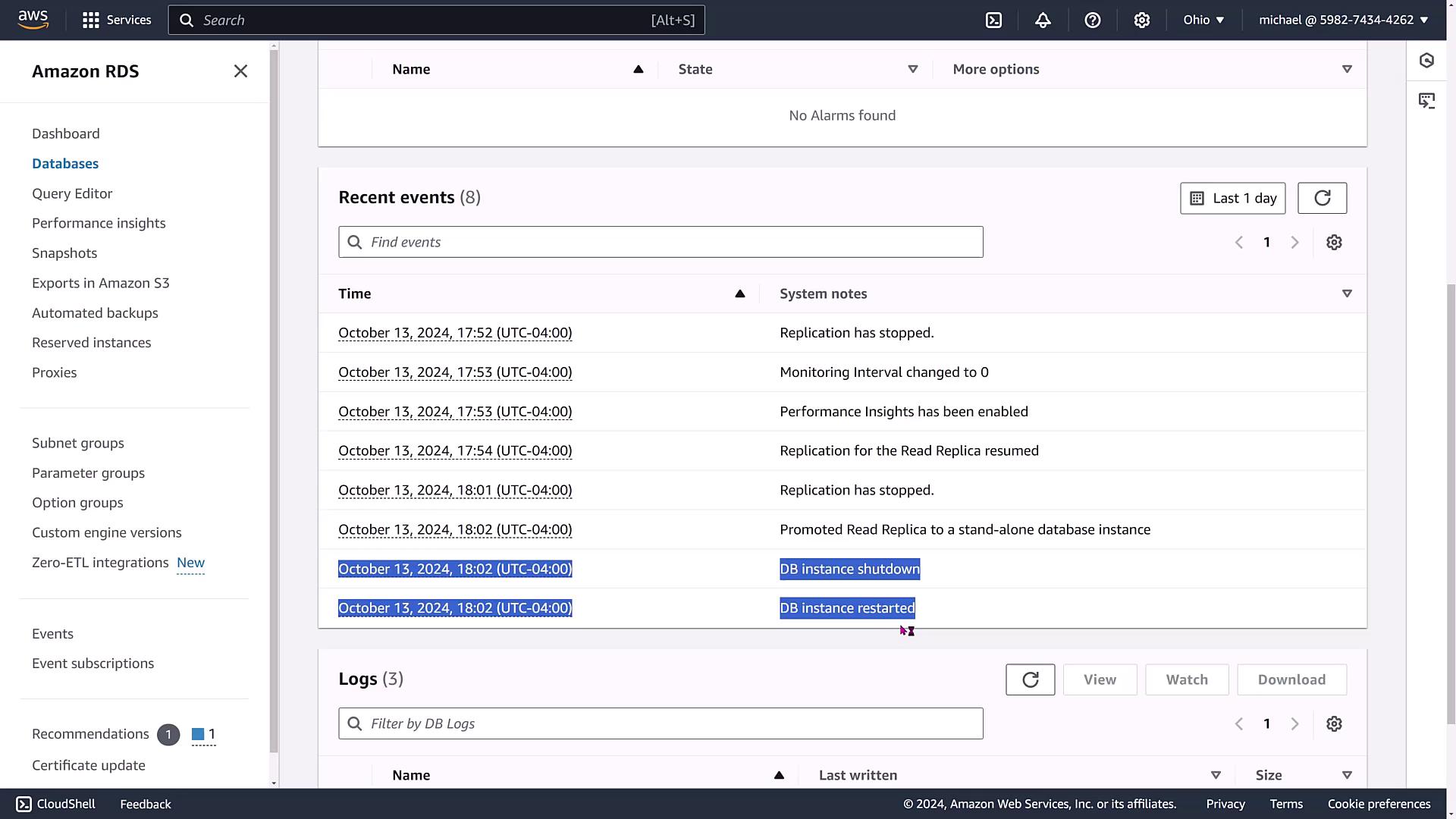AWS Certified SysOps Administrator - Associate
Domain 2 Reliability and BCP
Demo Promoting your own Read Replica to a Primary
Welcome students,
In this lesson, we'll guide you through promoting a read replica into a standalone, independent primary instance. This procedure applies to any read replica, whether it's part of a single-AZ or multi-AZ deployment.
Step 1: Selecting the Read Replica
Begin by accessing the Amazon RDS console and selecting the specific read replica—not the entire cluster or a singular instance. Ensure the replica is available before proceeding. Within the Actions menu, you'll find several options including the ability to temporarily stop the instance. For this demonstration, we will focus on the promotion action.

Step 2: Initiating the Promotion Process
Promoting the read replica temporarily disables automated backups and snapshots as part of the conversion process. Although you can re-enable automated backups after the promotion, they remain turned off during this demonstration to facilitate the transformation of the read replica into a primary instance.

Note
Remember that promoting a read replica disables automated backups momentarily. Be sure to re-enable backups post-promotion to maintain your data protection strategy.
Step 3: Monitoring the Promotion Process
Once the promotion begins, the read replica is modified and detached from its current cluster context. During this phase, the instance status will change to indicate that a modification is underway. At this time, the logs and events might not provide extensive details, as the system processes the promotion internally.
Step 4: Verifying the Promoted Instance
After the promotion process completes, the instance status will clearly show that it is no longer part of a cluster. The replica undergoes a reboot during which any existing connections from its previous configuration are terminated. Once rebooted, the database is available as an independent primary instance.
At this stage, you may choose to rename the instance to better reflect its new primary role, even though other configuration details, such as instance size, remain unchanged.

Step 5: Reviewing Logs and Events
Finally, validate the process by reviewing the logs and events. This confirmation ensures that the instance has been successfully promoted and rebooted as a standalone primary. This demonstration illustrates how promoting read replicas can effectively create live copies of your running databases.

Note
Keep a close eye on system logs during the promotion process for any unexpected behavior. Monitoring is key to assuring a smooth transition.
That concludes this lesson. We hope you found the demonstration clear and informative. See you in the next lesson!
Watch Video
Watch video content
Practice Lab
Practice lab